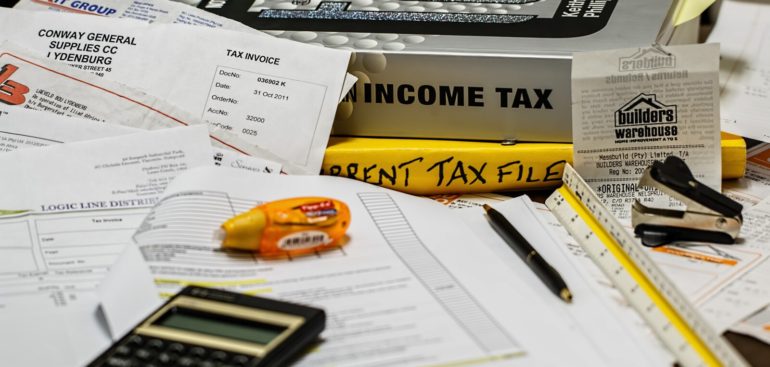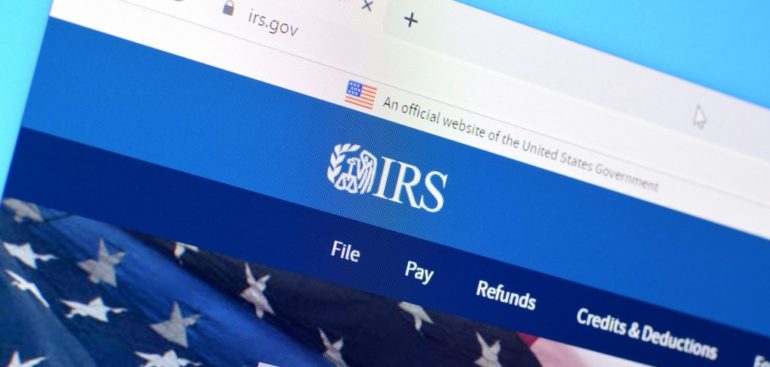If you owe back taxes to the IRS, the government can garnish your wages to pay the debt. An IRS garnishment can come without warning, so being prepared is a must.
No one wants to owe money to the government, especially if it’s a large amount. But it happens more than you think. Unfortunately, due to varying circumstances, many individuals find themselves in this predicament and aren’t aware of the correct procedures to get out. The best thing to do is pay off the debt as soon as possible, and yes, a garnishment may be on the horizon. But it doesn’t mean it can’t be avoided.
What is an IRS Garnishment?
An IRS Garnishment is a procedure where wages are taken from your paycheck, bank account, or other financial accounts to pay a tax debt. The garnishment is based on how much you make, the size of the debt, and how many other garnished payments are being implemented during each pay term. However, the only other garnishments in consideration are other government-related transactions.
The IRS also has the right to seize property if a paycheck isn’t available for garnishment. There is more than one way to retrieve IRS debt, but there are rules the agency must follow to levy these funds. The IRS cannot just start garnishment on a whim, neither can they seize property without warning. There’s a process with steps the government must follow.
As stated above, the IRS cannot immediately start a garnishment or levy without ample warning. If you understand how the garnishment works, you can possibly stop the procedure, or at least challenge the terms of the garnishment.
The Process Before an IRS garnishment
When a tax debt is assessed by the government, a notice for Demand of Payment is sent to the debtor. After additional attempts are made to retrieve the money from the debt, including multiple collection letters, the IRS will consider garnishment or even levying for the owed taxes.
The Final Notice of Intent to Garnish Wages is sent to the debtor. When this final notice is received, the debtor then has the right to a hearing to contest the retrieval of back taxes. Yes, you can challenge the call for IRS payment, but it’s not recommended.
How Much Can the IRS Garnish?
Yes, the IRS can only garnish a certain amount from your paycheck but it’s not subject to the same limitations as other establishments like collections agencies, which are drastically limited. Limits on how much the IRS can take are few.
For instance, you can be left with little money to live on if the IRS decides to garnish your check. This could mean taking home $500 of a $1000 paycheck. And if the paycheck is for $2000, it still means you could possibly only take home $500 to make ends meet.
This amount is usually determined by how many dependents you have and your standard deduction. IRS garnishment can be harsh. But that depends on how much money you owe in back taxes.
Also, one other stipulation that governs how much the IRS garnishes from a paycheck is child support. If this type of government support garnishment is already coming from your paycheck, it could reduce the IRS back tax garnishment, and even give you a small break.
What Can the IRS Garnish and Take?
Technically, garnishment means taking a portion of your wages from your weekly or bi-weekly paycheck. However, the government also has the right to take from bank accounts and financial institutions. They can also levy and sell automobiles, real estate, and any other recognized personal property that holds value for the debtor. When the government is owed money from previous unpaid taxes, they use most means necessary to collect a debt.
The IRS can also levy any property in which you have interest, such as property kept by someone else but still listed in your name. If you think the government cannot touch certain accounts you own, you’re wrong. The IRS can also levy retirement accounts, dividends, rental income, commissions, and even take the loan value of your life insurance as payment.
Can the IRS Garnish Social Security Payments?
Never be under the impression that your social security or social security disability check cannot be garnished by the government because it can. Your social security benefit is subject to garnishment as just as any other check, but there are limits to what the government can take. In the 90s, a law stated that the government could only garnish social security benefits reaching over $750, but laws often change.
In 2002, a new law was passed stating that only 15% of social security monthly benefits could be garnished to satisfy a back tax debt.
Unlike previous laws about social security benefits that stated only amounts over $750 could be garnished, now, regardless of the amount, 15% of checks can be garnished. Yes, this can leave individuals with little money to survive, but considering social security benefits are government payments, it’s the right of the IRS to collect a debt one way or the other until the debt is satisfied.
What You Should Do Before a Garnishment Happens
The first question to ask yourself is “Do I really owe these back taxes?”, or “Did someone make a miscalculation?” Getting information about how the back taxes are calculated is important. There is always room for error, even with the internal revenue service.
There is also a statute of limitations on how long taxes are owed and must be repaid. Understanding this is important as well. Making calls as soon as you get the first notice is the best way to handle the situation. If you don’t understand why the IRS wishes to collect a debt, then you’re more prone to fight the debt.
If you know you owe the money to the government, never try to take the case to court. This isn’t just about moral issues, it’s because you probably will not win the case if you’re dishonest. The IRS keeps impeccable records of past filed tax returns and non-payments, with vast amounts of information at their fingertips. Although the IRS must send all notices at least 30 days before attempting garnishment, it’s best to pay your debt by working with the agency itself. Avoiding tax evasion and paying what you owe is simpler than fighting for government money.
Chances are, the IRS has the facts you’re trying to avoid, but they are willing to help smooth things out. The government will work with you on an installment plan in most circumstances, so garnishment should always be a last resort.
One good thing about how the IRS works is that they give multiple chances to pay a debt. Along with a direct notification, the internal revenue service sometimes offers settlements of a lower price to satisfy debts quickly. This is seen many times with large debts, or payments in which the debtor has a hard time collecting the money. It’s even a possibility for those with disabilities. If you do choose to ask for a settlement, you will need to provide proof of your financial need.
Can You Appeal a Garnishment?
It is possible to appeal the garnishment, even after the 30 days notice from the government. However, most of the time, the appeal process works to stop garnishments when the IRS hasn’t followed through with proper procedures beforehand. If you can prove that the IRS hasn’t followed protocol, it’s the best chance, maybe the only chance of winning your case. Here are the only circumstances where this could happen:
- When filing bankruptcy
- If not given 30 days’ notice
- An installment plan is discussed during the appeals process
- When the expiration of the tax collection period is passed
Even though these options may relieve you of tax debt, it’s still best to pay what you owe to the government. Sometimes these maneuvers can backfire leading to the discovery of even more unpaid tax debts from the past.
How to Stop an IRS Garnishment
You can stop an IRS garnishment before it takes place. Even if the back taxes are piling up, you can find the best solution by working with the government and not against the agency. Fighting in court, in most opinions, is not the best idea.
It’s always good to find a resolution with the IRS to pay your debt off efficiently, and with little struggle on your part as well. After all, no one wants to lose half or over half of their paychecks every week, nor do they want to endure property seizure. Sometimes, only a professional can help with these types of situations.
Contact Innovative Tax Relief to discover the best avenue for paying off your back taxes. Tax negotiations, installment plans, and compromise are better than an IRS garnishment. Why not face the problem, find a solution, and quickly clear your record from any past tax debt?






